NOW IS THE TIME TO TREAT JAPANESE STILTGRASS
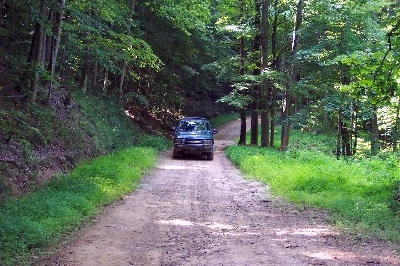
Japanese stiltgrass along a woods road in the Bear Fork backcountry
Throughout the summer Japanese stiltgrass has been seen growing on road sides, stream banks and bottoms, lawns, ATV trails and any other disturbed land that gets even modest amounts of sunlight.
Japanese stiltgrass has pretty much shown up in every nook and cranny of the Calhoun County woods and the highly destructive plant is rapidly displacing many important native plants and preventing logged over land from returning to a healthy forest cover.
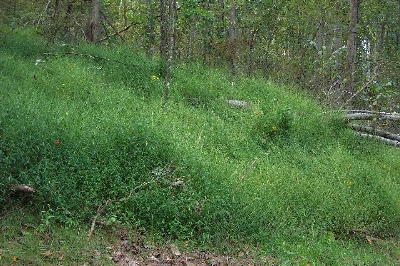
Japanese stiltgrass in a Gilmer County
woodlot two months after logging was finished
Because of changes being documented in the forest after stiltgrass becomes established, the long term impact of Japanese stiltgrass on the Calhoun woods is likely to change everything from butterfly numbers and summertime song bird populations to the numbers of rabbits, deer, turkey and any other animals that are year round residents of Calhoun County.
Stiltgrass is an annual plant that goes to seed in early September and specifically preventing seed production is the first step in long term control of the weed.
The simplest and cheapest way to kill stiltgrass is to mow, brush hog or weed whack it as close to the ground as possible from the first week of August to near Labor Day. If it is cut at any time earlier than mid August it will sprout back and produce seed as a very short but spreading plant and each plant can easily produce over 1,000 seeds.
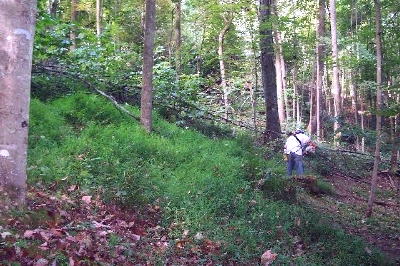
First stiltgrass treatment in the woods
of Crummies Creek one year after logging
Japanese stiltgrass has a seed that will accumulate in the soil and still germinate for at least three years so any mowing or weed whacking will need to be repeated next year but it can be eliminated after a few years of repeated effort.
If you do choose to weed whack Japanese stiltgrass buy the stoutest string your machine can handle and wear eye protection!
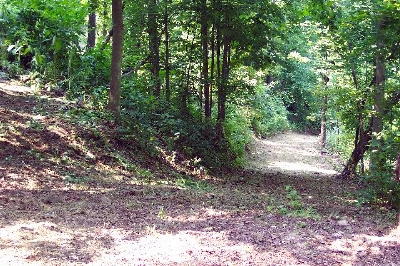
Healthy uninfested woods remain where stilt-
grass has been brush hogged and weed whacked
Herbicides that contain glyphosate, the active ingredient found in Round Up have been proven to be extremely effective against Japanese stiltgrass. One major disadvantage to using glyphosate based herbicides is that those types of chemicals are non specific, meaning that they pretty much kill every plant they touch.
At this time research is taking place to field test herbicides that will kill Japanese stiltgrass but leave most native perennials undamaged. Property owners are advised to carefully read labels and instructions before spraying any herbicides.
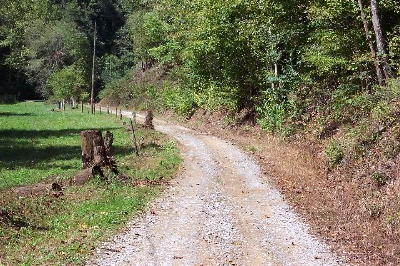
Weed whacker cutting on the left and herbicide
treatment on right two weeks after treatment